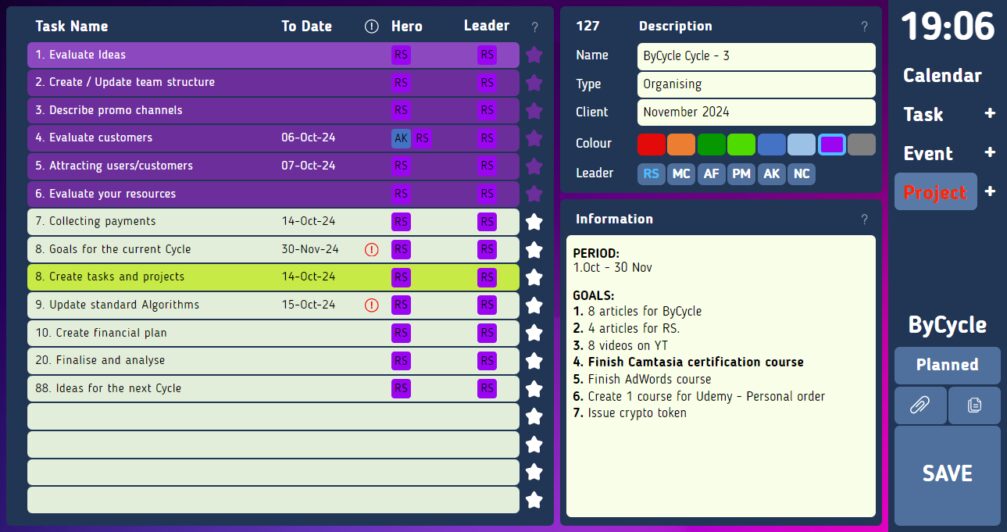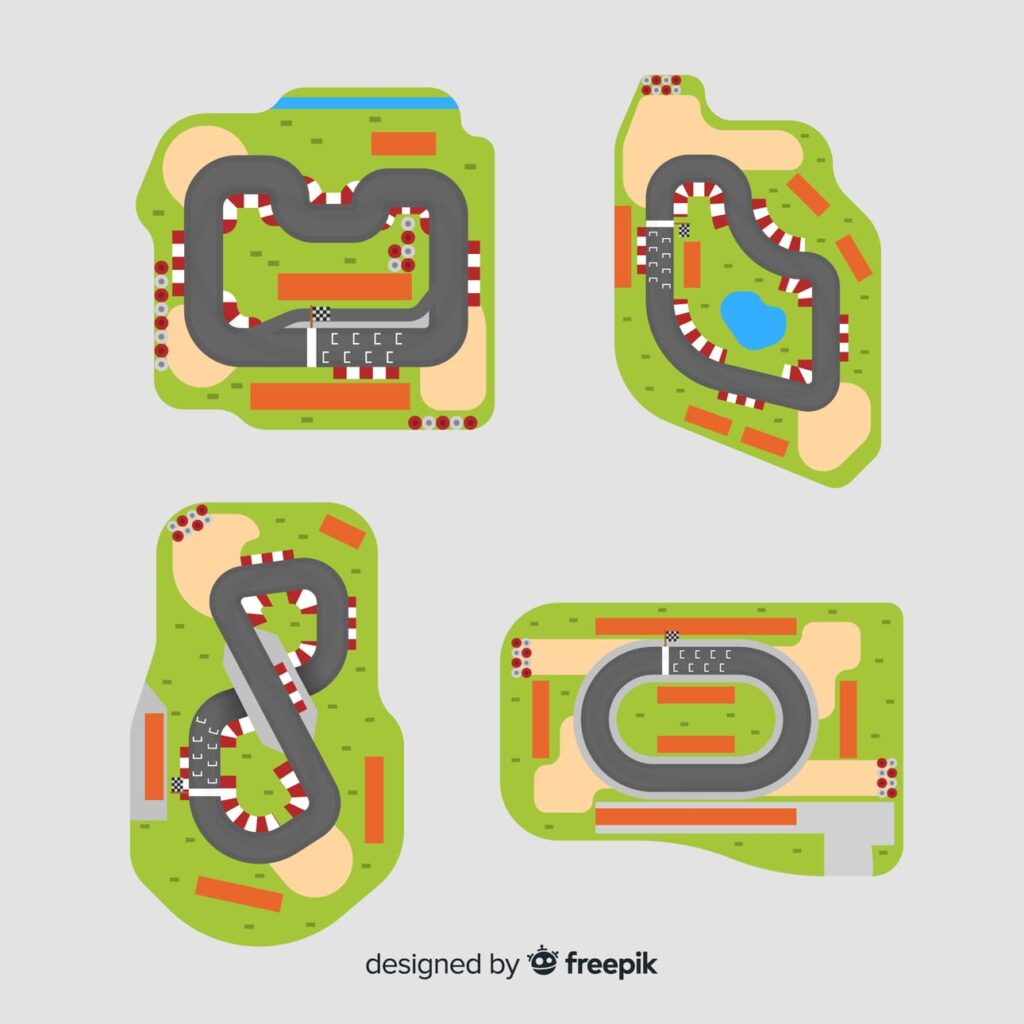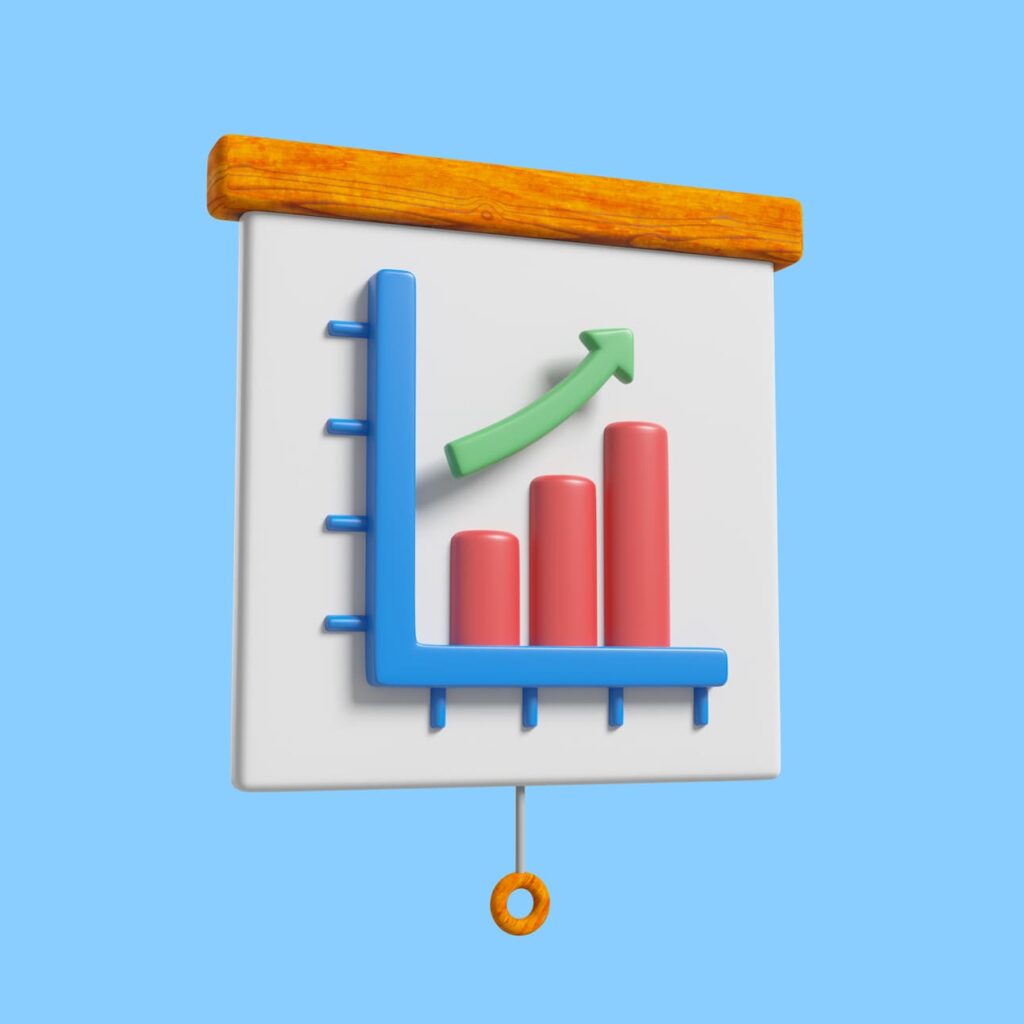Organise business by cycle
In this article, we look at how to efficiently organise a business using the ByCycle method.
The ByCycle method works for any business, regardless of its type or size.
With correct approach, it allows to achieve greater results with less effort.
It is a racing track, not a marathon
One of the most challenging things about doing business is the depressing feeling of running an endless, exhausting and never ending marathon.
At some point, eventually comes apathy and burnout.
Enthusiastic and focused entrepreneurs simply lose any interest in further development of their projects and accept whatever situation they have. Especially if the revenue allows us to cover business expenses on a regular basis.
The best way to overcome this obstacle is to change our attitude. Since at its core, this problem is more of a psychological nature.
Instead of imagining our business as an endless road that gets lost somewhere far beyond the horizon, we should take it as a cycle. Similar to a racing track.
Any cycle is a process that consists of beginning, development, finalisation and transition period.
Understanding the cycle of our business helps us to simplify and streamline our work and get better results.
Annual and ongoing business cycles
Annual business cycle.
Certain types of business, such as tourism and agriculture, are seasonal in nature and their business cycle aligns with the annual cycle.
For agriculture, this would be sowing (beginning), taking care (development), harvesting (end) and preparing (transition).
In tourism, there is a high season and a low season, which are also clearly tied to the annual cycle.
For these types of businesses, it is easier to streamline work, as it is more or less obvious what activities need to be performed at each stage.
Ongoing business model.
Other businesses work on the ongoing basis and their cycles are not so simple to determine.
For example, the work of a bakery, a laundry or an accounting firm, although it may have seasonal characteristics, will generally be typical, as people eat bread, wash clothes and conduct transactions every day of every month throughout the year.
Just for such businesses, determining and establishing a cycle would be beneficial the most.
Let’s take a look at the stages of the cycle and get a practical understanding of how to organise our work properly.
The beginning stage
Think about business and get ideas.
Every entrepreneur who thinks at least a little bit about his or her business always knows what exactly this business needs and what projects should be implemented first.
Therefore, each cycle always starts with ideas that the entrepreneur wants to implement and bring to life.
Ideas are formulated in the form of simple and clearly defined results.
The results shall be measured and recorded.
The efforts reasonably required to achieve these results determine the length of the cycle.
Plan all the work.
The next step is to plan the work that needs to be done to achieve the results.
Any work exists in the form of projects, tasks and meetings.
For example, if we want to put a new coffee machine in our coffee shop, it will be a task. It is a simple job that consists of several easy steps.
If we want to move to new premises, it will be a project already. To achieve the result, we need to perform a number of different complex tasks that might be stretched in space-time and require the efforts of different people.
And in order to attract investment to develop our brand and network, or to hire new team members, we want to hold meetings with some people.
Once we have defined the outcomes and streamlined the work required to achieve them, we can move on to the development stage.
The development stage
At the development stage, we undertake the planned actions to achieve the defined results: we implement projects, complete tasks, and hold meetings.
Organise work upon weekly plans.
Practice has proven that using weekly plans is most effective to organise work.
This helps us to reduce the imaginary psychological pressure and focus on the tasks that we actually want to accomplish this week.
The use of weekly plans creates perspective at work and prevents us from getting lost in the chaos of everyday hassles.
It is obvious enough that weekly plans should be directed into achieving the results of the cycle first of all.
Record your entire time on daily basis.
Entire personal time should be properly recorded. The easiest way to record time is to use 30-minute increments. By the “entire time”, we mean 24 hours of each day.
This is an incredibly efficient practice to get a clear and adequate picture of our lives and evaluate our efforts.
The habit of writing down all our time strengthens internal discipline and teaches us to respect our attention.
Conduct regular meetings with team members.
When it comes to teamwork, we should hold weekly meetings with all active team members. This may be one joint meeting or several one-on-one personal meetings.
At these meetings we discuss key questions, progress and plans for the current (next) week.
Implementing the practice of using weekly plans, recording entire time and conducting regular meetings allows us to create and maintain high tempo of stable work.
Finalizing a cycle
A cycle ends when one of two events occurs:
Either the final date of the cycle arrives, but not all the results have been accomplished, in which case we consider a cycle to be unsuccessful.
Or all the planned results are achieved, and then we consider it as a successful cycle.
Because success is the achievement of the planned result.
All team members shall be notified about the end of the circle. This creates an atmosphere of active participation in the team’s affairs and increases the motivation of its members for the next challenges.
If necessary, a general team meeting should be arranged.
The team members’ performance, key indicators, and financial accounting data are summarised and recorded. The personal qualities and achievements of team members are evaluated.
The strengths and weaknesses of the team are analysed, and promising areas of development are identified.
Business and team member decisions are made.
Transition period
After all the results are summed up and evaluated, a transition period begins.
During this time, the team works as usual or in a lightweight manner. Regular meetings with team members are held if needed only.
Some team members may work from home or other convenient locations.
The main point of the transition period is to prepare for the next cycle.
This is done by collecting and recording the ideas of the team members about the results to be achieved in the next cycle.
All other necessary preparations shall be made depending on the conditions of each particular business.
After all preparations are completed and ideas collected, the current cycle is over and the following cycle begins.
ByCycle tools for business organisation
In ByCycle Working Tool, we created a sample project to organise business upon cycles.
This sample project includes all the necessary tasks to integrate and use the ByCycle Method in everyday business practice.
We also added useful instructions to give ideas on how to perform such tasks.
In this way, we want to simplify the implementation of the ByCycle Method in the work of small businesses and improve the performance of companies using ByCycle Working Tool.
We are always happy to hold a meeting to discuss the details of the method. If necessary, we can provide various training for team members.
ByCycle is a beautiful and simple tool for work planning and team collaboration.
Try ByCycle for free and see how it works for you.
Check our gallery for more pictures of ByCycle.
For any questions or comments, feel free to contact us here.





